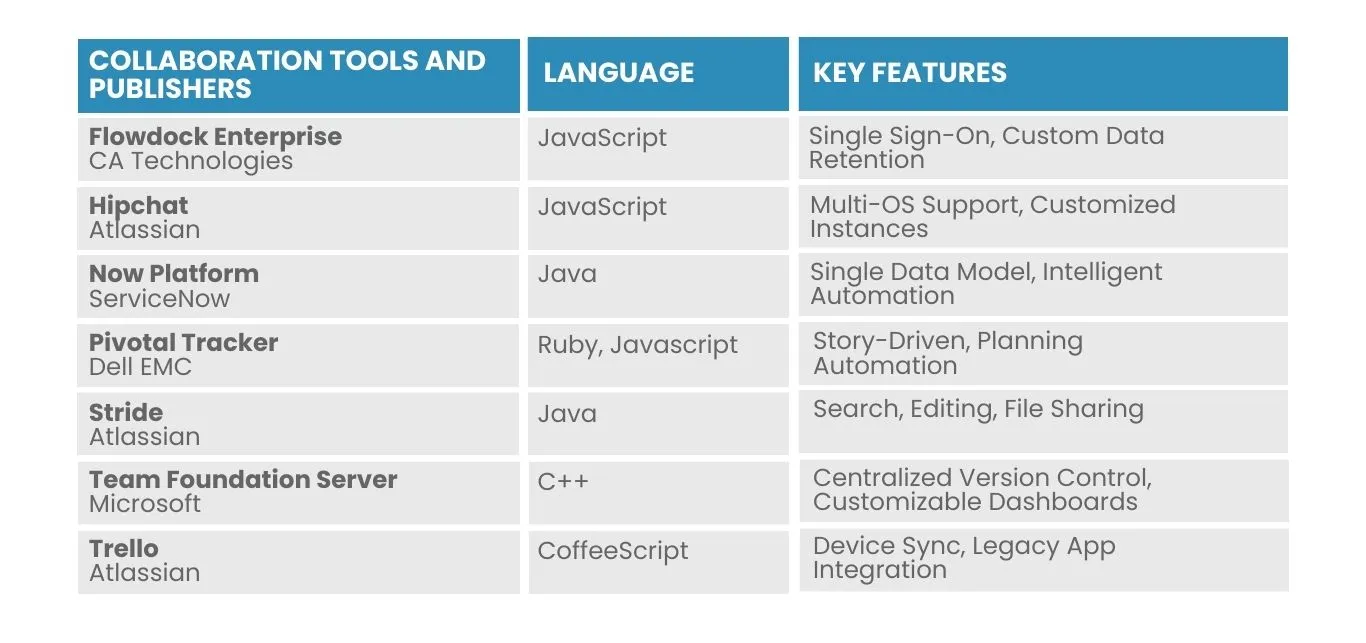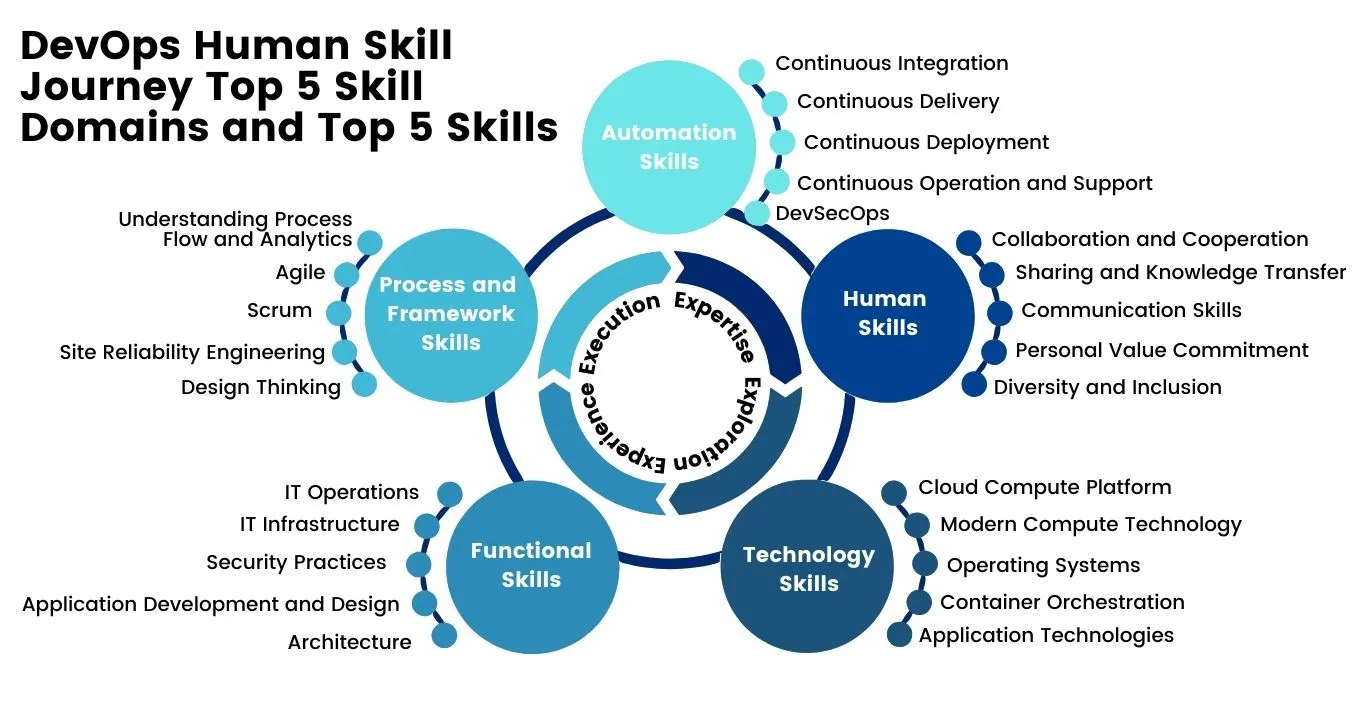You won’t find something groundbreaking in the following words — you must stay competitive and efficient to be successful. But you definitely find useful notes here to actually achieve this. And that's where the DevOps transformation plan comes into play.
DevOps, a portmanteau of Development (Dev) and Operations (Ops), is a set of practices that seeks to automate and integrate the processes of software development and IT operations. At its core, DevOps is guided by principles of collaboration, automation, continuous integration, and continuous delivery.
The adoption of DevOps is no longer a matter of choice but a necessity. According to Statista, 47% of organizations had adopted DevOps practices by 2022.
Most in-demand software development methodologies practiced, 2022
But why is DevOps gaining ground? The answer lies in the substantial benefits it brings. This transformation empowers teams to deliver better software faster, adapt to market changes swiftly, and enhance cross-functional communication.
For example, consider two hypothetical organizations: Company A, which embraced DevOps and achieved a 40% increase in software release frequency, and Company B, which adhered to traditional development practices. Company A was able to respond to customer demands more swiftly, leading to a 30% boost in customer satisfaction. Company B, on the other hand, struggled to keep pace with the evolving market, resulting in a gradual decline in customer loyalty.
So, let’s dive into the details of the DevOps transformation roadmap.
The Need for Readiness Assessment
The need for DevOps adoption is akin to a transformative journey. It promises to take your organization to new heights of agility, efficiency, and collaboration. However, before you put your feet in, it's vital to have a roadmap. The first step on this journey is an honest and thorough running through the operational readiness checklist.
Why is the starting point so important? Imagine you are standing at the foot of a tall mountain. Very soon, you will have to climb it. But you have no experience, no equipment, and no knowledge of how to behave in the mountains. Chances are you’ll fail. It's the same story with the DevOps transformation.
Without a DevOps readiness checklist, organizations risk falling flat with all their efforts. Such a hasty approach can lead to:
Resistance to Change: Let’s face it, people don’t want to change. They may not be prepared for the changes that DevOps demands, and this may terrify them. Hence, your team may resist the shift, leading to friction and reduced morale.
Ineffective Resource Utilization: A lack of preparation can lead to inefficient resource allocation. You can’t do all the stuff in a single moment. And thus your initiatives may not deliver the desired outcomes if resources are not correctly deployed.
Technological Hiccups: Any morph often requires new tools and technologies. If you are in the dark about these technologies or approaches, this will result in technology hiccups, leading to project delays and frustrations.
Missed Opportunities: Do you know what is the subject of the most regrets in our life, according to people 80+ years old? Missed chances. This quite applies to business. Without a clear assessment, organizations might miss valuable opportunities to improve efficiency and collaboration.
Alignment of Organization, Culture, Processes, and Technology
Consider a well-conducted orchestra. Each instrument is fine-tuned, and the musicians are in perfect harmony. Similarly, in a DevOps transformation, all the components must align seamlessly. The organization's culture, processes, and technology must work together in harmony to create a symphony of efficiency and innovation.
A readiness assessment ensures this alignment by:
Evaluating the organization's culture and identifying areas that need adjustment.
Analyzing existing processes to pinpoint bottlenecks and inefficiencies.
Assessing the current technology stack to identify gaps and areas for improvement.
In essence, it's about ensuring that every instrument in your orchestra is tuned and ready to play its part, harmonizing to create a beautiful piece of music — or, in this case, a successful DevOps transformation.
Key Factors to Identify Readiness
The adoption of DevOps is being driven by factors such as organizational culture, team skills, flexibility, and adaptability. You may have already noticed that all the key factors boil down to the four pillars of DevOps maturity. Let's break them down in more detail.
1/ Organizational Culture
Organizational culture is not just about adopting new tools and processes; it's about fostering a behavior and thinking way that encourages and sustains these practices.
Why You Should Give It A …? (You Got It)
Imagine an organization as a ship embarking on a voyage. The culture is the wind in its sails. In a DevOps transformation, this cultural wind can either propel the ship forward or leave it becalmed. A culture that fosters collaboration, adaptability, and a thirst for improvement acts as a favorable tailwind, accelerating the journey toward DevOps success.
DevOps collaboration tools for clear and streamlined teamwork
Keep An Eye On These Indicators of a DevOps-Friendly Culture
Collaboration and Cross-Functionality: In a DevOps culture, teams work cohesively across traditional silos. Developers, operations, quality assurance, and other stakeholders collaborate seamlessly. It's like a symphony where every instrument plays its part, contributing to a harmonious outcome.
Adaptability and Learning: A culture of continuous learning and adaptability is another key indicator. Teams are not afraid to experiment, learn from failures, and adapt to changing circumstances. This adaptability is akin to a chameleon changing its colors to blend into its environment.
Transparency and Communication: Open and transparent communication is fundamental. Teams share insights, issues, and knowledge openly. It's like a spider weaving an intricate web of communication, ensuring information flows freely across the organization.
Success Stories Time
Consider the case of Amazon. They have embraced a culture of experimentation and innovation, which aligns perfectly with DevOps principles. This culture allowed them to pioneer practices like "two-pizza teams" – small, autonomous teams that can be fed with just two pizzas. This autonomy and culture of experimentation have been crucial to their continuous growth and success.
Netflix is another prime example. Their culture of freedom and responsibility has empowered employees to make decisions and take ownership of their work. This cultural approach has enabled rapid innovation and the ability to adapt to changing market demands swiftly. In contrast, organizations with a rigid, hierarchical culture may face significant hurdles in adopting DevOps. It's like trying to sail against the wind – progress is possible, but it requires far more effort.
2/ Process Alignment
Metaphorically, process alignment is akin to ensuring your vehicle is equipped with the right engine and transmission. The engine represents your people, culture, and technology, while the transmission signifies the processes that enable the smooth flow of work.
Process Alignment: Think It Through
Just as a powerful engine is futile without a proper transmission system, even the most skilled and motivated teams in a DevOps environment can struggle without well-aligned processes. DevOps thrives on processes that enable seamless collaboration and rapid delivery. These processes encompass a spectrum of practices, at least these ones:
Continuous Integration (CI): Automating the integration of code changes into a shared repository, allowing teams to detect and address integration issues early. It's like a well-oiled assembly line where every component fits perfectly.
Continuous Delivery (CD): The process of automating the delivery of software to various environments, reducing manual interventions, and ensuring the software is always in a deployable state. Think of it as a conveyor belt that effortlessly moves products from the factory floor to their destination.
Automated Testing: Automated testing ensures that new code changes do not introduce regressions or defects. It's like quality control checks in manufacturing, where products are rigorously tested to meet quality standards.
Assessing Process Maturity and Identifying Gaps
Are you ready for transformation? Are you sure? Imagine you’re going to start a long-lasting journey by car. Then, you need to check all the details and car systems, right? Otherwise, you are going to break down in the desert or something. You’d better check:
Current Processes: If your system works smoothly, you don’t even think about it sometimes. But understanding how your team currently works is crucial. This can help you to identify bottlenecks.
Automation Levels: Assessing the degree of automation in processes, including integration, testing, and deployment.
Workflow Efficiency: When you don’t know your engine’s efficiency, chances are you “break down in the desert”. So one more time — analyze the flow of work and try to identify areas where it can be streamlined and accelerated.
Bottlenecks and Delays: All the bottlenecks you found in the current processes must be solved as they hinder the rapid software delivery.
Quality Assurance: The same story as with efficiency. Evaluate the quality of the product at all the stages (if it’s possible). This way, you can ensure they align with DevOps principles.
Thus, organizations can pinpoint the gaps and areas that need improvement. This process alignment assessment is like upgrading your vehicle's transmission to ensure it can smoothly handle the engine's power. It ensures that your processes are equipped to support the collaborative and fast-paced nature of DevOps.
3/ Team Skills and Training
Skills and competencies of your teams will play a central role in DevOps success. To continue the automotive metaphor, these skills are the gears and mechanisms that drive your vehicle forward. As the demands of DevOps are unique, ensuring your teams possess the necessary capabilities is paramount.
Skills and Competencies for DevOps
Broad skills map for successful DevOps implementation
Automation Proficiency: If you want to implement the DevOps approach, then brush up on automation skills. Teams need to be proficient in scripting languages to eliminate manual, time-consuming tasks.
Infrastructure as Code (IaC): Paraphrasing the modern saying, managing infrastructure through code is king for DevOps. Let your team learn IaC tools like Terraform and Ansible.
Continuous Integration and Continuous Deployment (CI/CD): Understanding and implementing CI/CD pipelines is also very important. Jenkins and Git — the tools you need.
Containerization: Containerization technologies like Docker and container orchestration tools like Kubernetes — through them, you’ll manage and scale applications. So pay attention to this point.
Security Awareness: Probably, the most important part in today’s digital world. With many breaches throughout the world, ensuring security must be the cornerstone of your working system. Teams should have a strong grasp of security principles in a DevOps context.
Upskilling and Reskilling: Neuroplasticity Check
DevOps represents a shift in how teams operate. To embrace this shift, organizations often need to invest in upskilling and reskilling their “crew”. Consider this as providing your team with the latest tools and technologies to navigate challenging terrain. And in some meanings, your success depends on your team members’ neuroplasticity — how fast they can learn new things.
For example, Amazon's "We Power Tech" initiative offers training programs and resources to help individuals from underrepresented communities develop technical skills. It aims to diversify the tech workforce while providing essential skills needed for a DevOps world.
Similarly, Microsoft's "Azure DevOps Engineer Expert" certification is designed to validate the skills and knowledge required to implement DevOps practices. This certification program equips professionals with the competencies needed to excel in a DevOps environment.
The Proven Impact of Training Programs
A study by Puppet and DevOps Research and Assessment (DORA) found a strong correlation between the use of DevOps practices and high-performance IT organizations. It emphasized that training and learning are key drivers of DevOps success. Organizations that invested in training experienced faster delivery of software and lower change failure rates.
Another study by the Association for Talent Development found that companies that invest in employee training and development have 218% higher income per employee than companies that don't. And one more piece from the Society for Human Resource Management also found that organizations that invest in employee training and development have a 24% higher profit margin than those that don't.
4/ Tools and Technology
Automation tools and technologies form the digital scaffolding upon which your DevOps practices are built.
The Role of Automation Tools and Technology
DevOps thrives on the foundation of automation. Automation tools are responsible for performing repetitive, time-consuming tasks with precision and consistency. They enable organizations to streamline workflows, reduce human error, and accelerate software development and deployment. Here are some of the key automation tools and technologies.
Jenkins: Jenkins is a widely used open-source automation server that supports building, deploying, and automating projects. Its extensive plugin ecosystem makes it a favorite for CI/CD processes.
Docker: Docker is a containerization platform that simplifies application deployment and management. It allows teams to package applications and their dependencies into containers for consistent execution across different environments.
Kubernetes: Kubernetes is an open-source container orchestration platform that automates the deployment, scaling, and management of containerized applications. It simplifies the management of containerized workloads.
Ansible: Ansible is an automation tool for configuration management, application deployment, and task automation. It uses a simple, human-readable language that makes it accessible to a wide range of team members.
Evaluating Your Current Toolset
When you’re going to conquer a mountain, you typically assess where you are and where you want to get to. Similarly, before embarking on a DevOps journey, organizations must critically assess their current toolset and infrastructure. This evaluation helps identify gaps, redundancies, and areas for improvement. It's akin to taking inventory of your toolkit before a big project.
Netflix is renowned for its DevOps success. The company utilizes an impressive array of tools and technologies to manage its vast infrastructure. Spinnaker, an open-source, multi-cloud continuous delivery platform, is a critical component of Netflix's toolset. It allows them to automate and streamline their deployment pipelines, ensuring rapid and reliable software delivery.
Or look at the “Uncle Google” case. The tech giant uses a variety of DevOps tools and technologies internally to develop and deliver its products and services. These tools help Google to innovate quickly and deliver robust products and services to its users.
When You Need a Tool Integration and Compatibility
Individual tools are like the instruments in an orchestra. For a harmonious symphony, they must work together seamlessly. This integration and compatibility are essential for the flow of data and automation across the entire software delivery pipeline.
Let’s thank Atlassian. Why so? Just because the company offers a suite of tools designed for DevOps collaboration. Jira, Bitbucket, and Confluence, among others, can be integrated to facilitate efficient communication and collaboration among development, operations, and other teams. By using these instruments, whole teams can boost their productivity and, hence, the quality of their products.
5/ Leadership Support and Buy-In
Leadership support and buy-in are the final, yet profoundly significant, factors in evaluating an organization's readiness for DevOps.
Leadership Is King
Supervision is the compass that steers the direction of DevOps implementation. It plays a central role in setting the tone, expectations, and vision for the transformation. Without strong support and active involvement from top-level executives, the journey to DevOps excellence can be arduous.
What exactly should the leaders do to bring about successful DevOps transformation?
Setting a Clear Vision: Effective leaders articulate a compelling vision of how DevOps can improve the organization's agility, efficiency, and competitiveness.
Securing Resources: Leaders must allocate the necessary resources, including budget, talent, and time, to foster a DevOps culture.
Leading by Example: Leading figures should demonstrate their commitment to DevOps principles through their actions and behaviors.
Securing Executive Support
Securing executive support and involvement is a critical step in the DevOps transformation process. To achieve this, DevOps champions within the organization must communicate the benefits and business value of DevOps clearly and persuasively.
Example: Capital One is a prime instance of a financial institution that successfully embraced DevOps. Their leadership, including CIO Rob Alexander, recognized the need for a culture shift and actively supported the transformation. Capital One's executive team worked collaboratively with technology teams to drive a DevOps culture across the organization.
Challenges of Change Management
DevOps transformation often involves a shift in mindset, practices, and workflows. Change can be met with resistance. Leadership is instrumental in addressing challenges related to change management.
Leaders must:
Address Resistance: Acknowledge and mitigate resistance to change within the organization. Encourage open dialogue and provide the rationale behind the transformation. And one more time — leading by example! Ensure your leaders are the first “soldiers” at the forefront of DevOps implementation.
Provide Resources for Training: Support ongoing training and skill development programs for employees to help them adapt to new DevOps practices.
Measure Progress: Establish key performance indicators (KPIs) to monitor and measure the impact of DevOps transformation. Share the results with the organization to reinforce the benefits.
Readiness Assessment Framework
A well-structured DevOps transformation roadmap can serve as a compass, guiding organizations through the intricate process of DevOps adoption. This framework amalgamates the critical factors discussed in the preceding sections into a coherent evaluation process.
Step 1: Organizational Culture Assessment
Begin by examining your organization's culture. Gauge the level of collaboration, adaptability, and shared responsibility. Are there cultural aspects that hinder or promote DevOps practices? A culture assessment can provide insights into potential challenges.
Step 2: Process Alignment Evaluation
Evaluate your existing processes against DevOps principles. Identify areas where alignment is strong and pinpoint weaknesses. Look at aspects such as automation, continuous integration, and delivery. Determine the maturity of your processes and highlight gaps that need attention.
Step 3: Team Skills and Training Analysis
Assess the skills and competencies of your teams. Identify areas where skill development is needed to meet the demands of DevOps. Determine whether upskilling or reskilling programs are necessary and consider certifications and training resources.
Step 4: Tools and Technology Appraisal
Examine your current toolset and technology infrastructure. Ensure that they align with the requirements of DevOps. Evaluate whether there is a need for new tools or better integration of existing ones.
Step 5: Leadership Support and Buy-In Review
Scrutinize the level of support and involvement from top-level executives. Is there a clear vision for DevOps within the leadership team? Assess whether resources are allocated to support the transformation and measure the degree of executive involvement.
To sum it up
The journey toward DevOps excellence is a transformational one, marked by cultural shifts, process enhancements, skill development, technology integration, and leadership commitment.
Here are DevOps checklist a-la key takeouts:
Embracing DevOps is not just about tools and processes; it's about aligning the heart and soul of your organization with the principles of DevOps.
Assessing readiness before embarking on a DevOps transformation is essential for success.
The readiness assessment framework discussed in this article provides a holistic approach to assessing readiness.
Organizations should prioritize cultural, process, skill, technology, and leadership alignment for a successful transition to DevOps.
The importance of readiness assessment before embarking on a DevOps transformation cannot be overstated. It is the foundation upon which successful and lasting change is built. So keep an eye on each step mentioned above, and you’ll get more than you bargained for.






